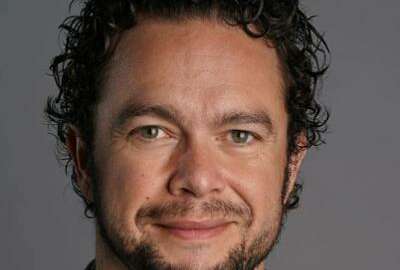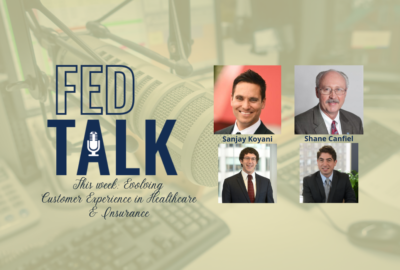
Cloud Exchange: Leveraging cloud data and migration in the public sector healthcare arena
This discussion, with Matt Soltis, the vice president of Cloud Solutions at GDIT, is part of Federal News Network's Cloud Exchange
Cloud computing is rapidly advancing health care on three important fronts.
First, according to Mathew Soltis, vice president of Cloud Solutions at GDIT, is how it’s improving health care research. The cloud enables aggregation and sharing of data in a given research domain, speeding visualization and data analysis, and therefore the development of remedies.
“NIH is a good example of some data sharing here around COVID. They have a commons platform, where researchers can get together and share data in a common standard, a common infrastructure,” Soltis said on Federal News Network’s Cloud Exchange. Earlier, the exchange of hard drives or snail-like downloads simply held things up, he said. Now cloud deployments are “accelerating research outcomes.”
The second area of cloud-induced improvement, Soltis said, is how it eases compliance with a myriad of health-domain requirements, such as privacy protection under HIPAA. Basic cybersecurity also improves under a well-crafted cloud implementation, he added.
“What we see now is a lot of the cloud providers and the service providers have raised the standards,” Soltis said. “So if you want to use data or access infrastructure in the cloud, it’s now HIPAA compliant or can support your HIPAA outcomes. That’s advancing the cyber posture of a lot of customers.”
Third is how the cloud is enabling new modes of remote health care delivery and thereby improving outcomes. For example, cloud-hosted data related to electronic health records aids EHR interoperability and access from anywhere, Soltis said.
Taking advantage of cloud computing comes with challenges, Soltis pointed out. A central question is how to handle and govern the large amounts of data that characterize health information.
“When we talk to federal customers, over 40% of them are experiencing issues with data migration,” Soltis said. Beyond any technical challenges lie the questions of data ownership, who is going to use the data, who in sharing arrangements pays cloud costs, and who’s responsible for backups.
Key, Soltis said, is “having an official role to own, manage, charter, chaperone and govern the data.” Namely, the chief data officer.
But the CDO organization must partner with other stakeholders. When the CDO “sits at the same level as technology and the mission owner and the application owner, that provides the best outcome,” Soltis said.
On the technical side lie questions of how to design architecture for data lakes, dealing with mixed structured and unstructured data, and the most economical ways to tier the storage setup.
“If that infrastructure is in place with your architecture, you can then do some higher level activities like machine learning, artificial intelligence and data visualization,” Soltis said.
Success depends on getting those pieces in place, he said, but additional strategies can provide shortcuts for healthcare agencies.
For instance, look at how practitioners in other domains have done it.
“Sometimes in parallel industries things like high performance computing, anomaly detection, image recognition — there may be other agencies or organizations doing this,” Soltis said. “Some of the cross-government communities have been really successful here, looking at those use cases, where you can apply that technology and that solution to healthcare data.”
The specific strategy leading organizations take, he added, takes data as the primary focus, and moves data to the cloud first — ahead of applications.
Contractors can help too. Soltis said GDIT’s secure, cloud-native data reference architecture applies in many circumstances. He cited the Indian Health Service, which is modernizing its EHR system to incorporate the cloud.
Copyright © 2025 Federal News Network. All rights reserved. This website is not intended for users located within the European Economic Area.
Tom Temin is host of the Federal Drive and has been providing insight on federal technology and management issues for more than 30 years.
Follow @tteminWFED





